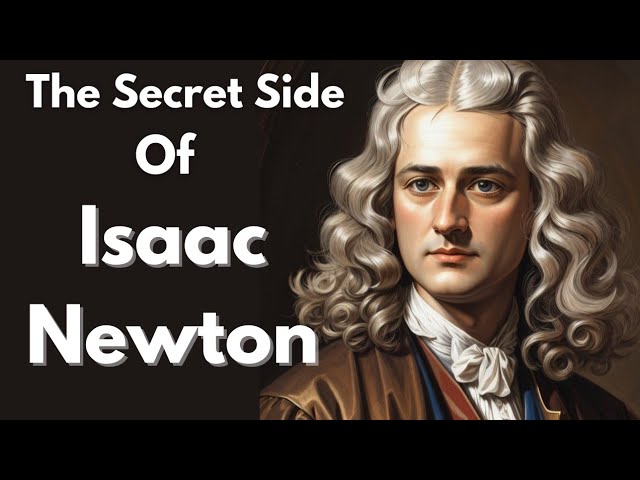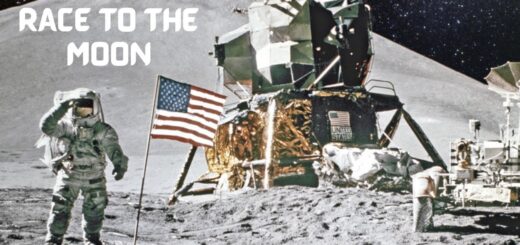The Dark Secrets Sir Isaac Newton

A list of the most influential people of all time wouldn’t be complete without Sir Isaac Newton. Newton’s laws are tied to almost everything we see in everyday life. They help us understand how cars work, how baseballs move, how anything moves. Yet there was a secret side to the 17th century scientist which will become clear by the end of this story. By his mid-20s, Newton had already invented calculus. Not bad for the son of an illiterate farmer. He would never meet his father who died three months before his birth on Christmas day 1642 in the small english village of Woolsthorpe Manor in the county of Lincolnshire.
He was a premature baby and so small he was later told he could fit inside a quart mug. He barely survived. When Newton was three, his mom remarried and moved to a nearby village to live with a wealthy clergyman. Newton was left behind in the care of his grandparents that abandonment scarred him.
Years later, he wrote a list of his sins, recalling an outburst from childhood: “Threatening my father and mother Smith to burn them and the house over them.” He was a curious child – more interested in mechanics than making friends. He carved this sundial as a nine-year-old. When he was 12, he enrolled at a local grammar school. His signature can still be seen by a windowsill of the King’s School today. After the death of his stepdad, his mother tried to remove him from school so he could be a farmer – a prospect that he dreaded.
Luckily, the schoolmaster convinced his mother to send him back to class where he gained the knowledge necessary to enter the University of Cambridge in 1661, paying his way by working as a valet. Although he studied the works of the ancient Greek philosophers, he questioned their theories writing in his notebook in Latin, “Plato is my friend, Aristotle is my friend, but my best friend is truth.” He vowed to find the truth through rigorous scientific experimentation. His time as an undergrad was unremarkable but the extraordinary circumstances that happened next would set the stage for his greatest achievements.
Pandemic Shortly after receiving his Bachelor’s degree in 1665, the bubonic plague ravaged Europe and would take the lives of an estimated one out of every four people in London. The pandemic forced Newton to work from his childhood home for the next two years and would lead to his most amazing breakthroughs. He used a prism to discover that white light and sunlight is made up of the colors of the rainbow. The widely held belief at the time was Aristotle’s theory that color was a mix of black and white. To prove his theory, Newton built a reflecting telescope that used mirrors rather than lenses – leading to a more accurate image. That’s a whole lot safer than the time he stuck a sewing needle into his eye socket to figure out if altering his eye shape would change his perception of color.
Apple Tree
Outside the family home was also an apple tree. The famous apple tree. Legend has it that Newton was Apple tree sitting beneath a tree when an apple bonked him on the head, prompting him to think about gravity – the force that brings things down. There’s no evidence to suggest the fruit actually fell on his head but he did ask the question that helped unlock our understanding of the universe: Could the same force reach all the way to the moon? He reasoned that the same gravitational pull kept the moon orbiting around Earth rather than wandering off and he believed this could also explain the movement of our planets in the solar system.
The mathematics at the time wasn’t sophisticated enough to determine the motion of these objects so Newton invented his own form of math calculus. There was a dispute over who actually invented calculus. When German mathematician Gottfried Leibniz published his paper on calculus in 1684, Newton claimed he’d done the same work 20 years earlier.
The thing is, Newton was so secretive that he hadn’t actually made his efforts public because he couldn’t stand the scrutiny of his work. When Leibniz appealed to the Royal Society in London, Newton wielded his influence as the scientific academy’s president to get it to side with him. Most historians agree that the two discovered calculus independently. In 1667, after the end of the plague, he returned to the University to continue his research as a fellow.
He was a workaholic. Sometimes, he’d forget to eat. Just two years later while still in his mid-twenties, he obtained one of the most prestigious academic posts in the world. The Lucasian Professor of Mathematics later held by none other then Stephen Hawking. Yet he was indifferent to his students. One time, when no one showed up for class, he is said to have lectured to an empty room. His true passion lay in research.
First Edition
In 1687, he published his masterpiece: the Mathematical Principles of Natural Philosophy – often referred to simply as Principia – one of the most important works ever written.This was his own first edition copy. It was here that he laid out his law of universal gravitation as well as his three laws of motion. The first describes how an object acts when no force is acting upon it. For example, a rocket stays still until a force is applied to it. The second law tells us that the more mass an object has, the more force it’ll take to move it. A larger rocket requires more fuel to make it accelerate. The final law states that for every action there is a reaction. The engine produces hot exhaust gases that flow through the rear of the rocket. In reaction, a thrusting force is produced – pushing the rocket skywards. Newton may be considered one of the greatest scientists the world has ever known yet he actually contributed more words to theology.
Believe on Bible
Newton believed the Bible provided the code to the natural world and by carefully studying the Holy texts, he could predict the future. He believed the apocalypse would happen in the year 2060 with the caveat: “It may end later but I see no reason for its ending sooner.” He foresaw a period marked by war and catastrophe followed by the second coming of Christ and the beginning of a new, divine era. His religious side was largely hidden from the public all the way until 1936, when Sotheby’s auctioned off his theological manuscripts. They ended up in the hands of a Jewish scholar before being given to the state of Israel. 7,500 pages in Newton’s own handwriting.
Christianity
He did hold unorthodox views of Christianity by rejecting the Trinity – the belief in the father, son, and the holy spirit. And also fought against the attempt by King James II to catholicize the universities which got him elected as a Member of Parliament where he served two brief terms. Apparently, the only thing he said on the record was to request that a window be closed. Alchemy Newton also had another unknown side to him. He spent 25 years secretly studying alchemy – the search for a method to turn common metals into gold. This is a manuscript where Newton wrote down a recipe thought to be a step toward concocting the mythical Philosopher’s Stone now popularized in the Harry Potter series. Alchemists believed it could even help humans achieve immortality.
Poisoning during Examination
Unfortunately, Newton may have gotten mercury poisoning from all the time spent in the laboratory. Examinations of his hair after his death found high levels of the toxic compound which scholars believe could explain his mental breakdown in 1693 when he lost grip on reality. He wrote letters accusing the few friends he had of conspiring against him. He suffered from insomnia and oppression. The personal crisis lasted a year and a half. Not too long after he ended his 30-year career at Cambridge. In 1696, he moved to London to help run the Royal Mint. Britain’s finances were in ruins because of the rampant practice of clipping off pieces of coins.
Counterfeiting was also an issue
Newton used a scientific precision to improve the accuracy of coinmaking as Warden and then Master of the Mint. He also took it upon himself to prosecute culprits, some of whom ended up hanging from the gallows. His later years would be spent further cementing his reputation and sometimes that meant trying to erase his rivals from the history books. Another ugly dispute involved a brilliant scientist named Robert Hooke who contended he was the one who gave Newton the notion that led to his theory of gravity and wanted credit.
President of Royal Society
In response, Newton is accused of using his powers as President of the Royal Society to get rid of the only known portrait of Hooke. None exists to this day. Newton succeeded in getting the legacy he wanted. In 1705, Queen Anne of England knighted him during a royal visit to the University of Cambridge, making him Sir Isaac Newton. A complicated man who remained reclusive yet desperately wanted to be remembered. Who threw himself into his work at the cost of all hobbies and never married. Who was a man of science and also, a man of faith.
When Newton was died
Newton died in his sleep on March 20, 1727 and was buried at Westminster Abbey. the Latin inscription on his grave reads: Here lies that which was mortal of Isaac Newton. His immortal legacy continues to mold our modern world. The English poet Alexander Pope was so moved by Newton’s accomplishments, he wrote the famous epitaph: Nature and nature’s laws lay hid in night. God said “Let Newton be” and all was light. For Newsthink, I’m Cindy Pom.








